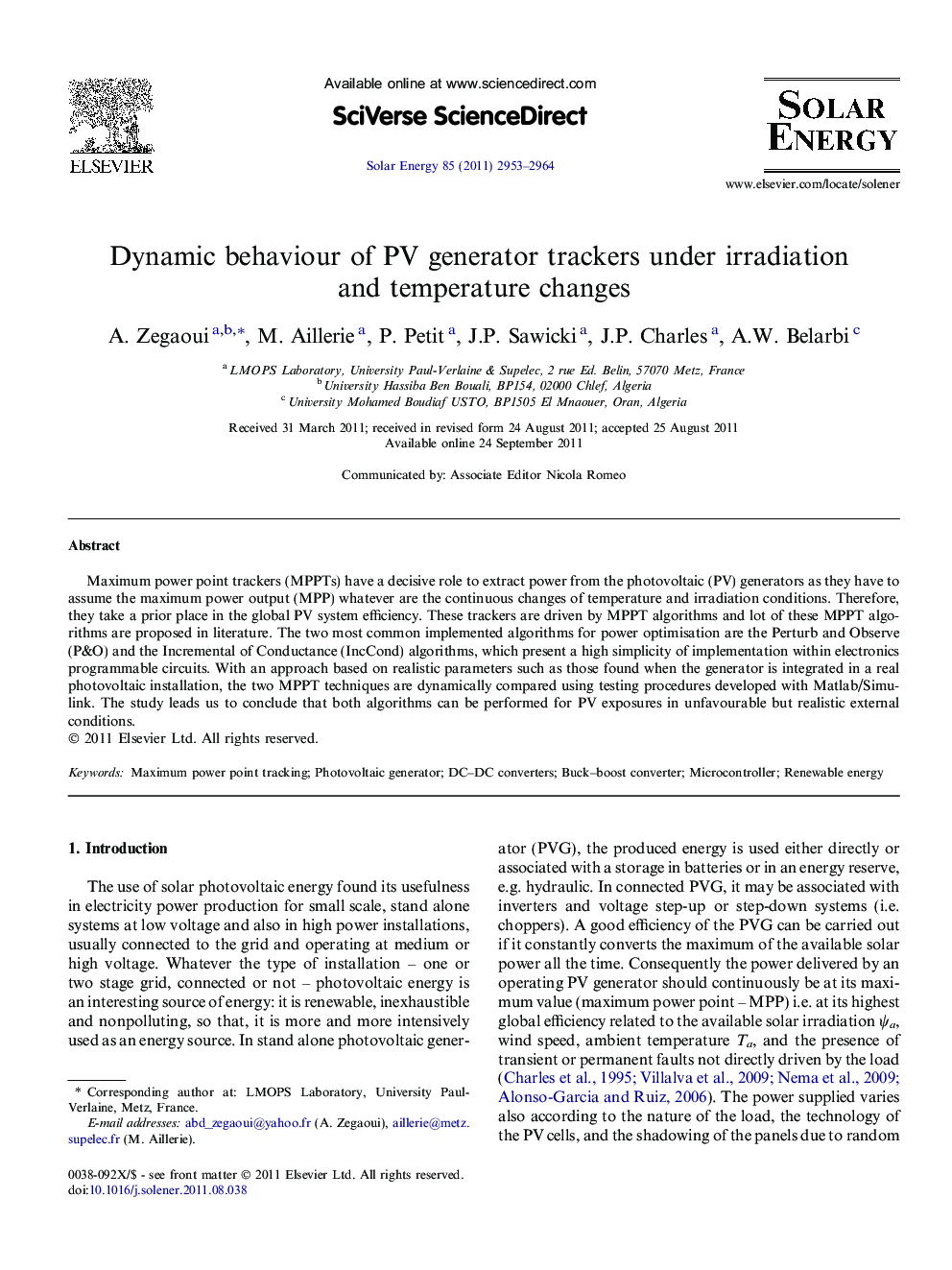| Article ID | Journal | Published Year | Pages | File Type |
|---|---|---|---|---|
| 1551153 | Solar Energy | 2011 | 12 Pages |
Maximum power point trackers (MPPTs) have a decisive role to extract power from the photovoltaic (PV) generators as they have to assume the maximum power output (MPP) whatever are the continuous changes of temperature and irradiation conditions. Therefore, they take a prior place in the global PV system efficiency. These trackers are driven by MPPT algorithms and lot of these MPPT algorithms are proposed in literature. The two most common implemented algorithms for power optimisation are the Perturb and Observe (P&O) and the Incremental of Conductance (IncCond) algorithms, which present a high simplicity of implementation within electronics programmable circuits. With an approach based on realistic parameters such as those found when the generator is integrated in a real photovoltaic installation, the two MPPT techniques are dynamically compared using testing procedures developed with Matlab/Simulink. The study leads us to conclude that both algorithms can be performed for PV exposures in unfavourable but realistic external conditions.
Graphical abstractFigure optionsDownload full-size imageDownload as PowerPoint slideHighlights► Comparison between two MPPT was made with original models under Matlab. ► External PV parameters were modeled by original and actual tests. ► Both MPPT reach instantly the MPP but the stability is not achieved in the same manner. ► IncCond is efficient in rapid changes but the P&O track well in the random changes. ► A novel original MPPT was recently developed, tested and implemented in electronic system.
